Top Tier CPU Air Coolers Q3 2015: 9-Way Roundup Review
by E. Fylladitakis on July 6, 2015 8:00 AM ESTThe Logisys (DeepCool) Gamer Storm Assassin
Founded back in 1996, Deepcool (Logisys in the North American markets) is one of the oldest CPU cooler manufacturers. They are not a very well known brand name because they primarily focused on server and OEM coolers, not retail products. However, their recently launched "Gamer Storm" range comes to change that, with direct focus on retail products for advanced users. Deepcool provided us with their "Assassin" cooler for this review, the highest performance CPU cooler they currently market.
Deepcool supplies the Assassin in a very tall, large cardboard box with a relatively simple, dark artwork theme. Everything is exceptionally well packed inside the box, with everything protected inside secondary boxes and layers of polyethylene foam. The bundle consists of the hardware necessary for the mounting of the cooler, a fan power cable splitter and a Molex power adaptor, a tube of quality thermal grease, a metallic case badge and six wire clips for up to three cooling fans.
The Deepcool Gamer Storm Assassin is a very large and heavy dual tower cooler. It weighs more than 1.5 kg with both fans installed, making it one of the heaviest CPU coolers in existence. Each tower consists of fins forming a jagged saw tooth formation on one side and a complex geometric pattern formed of tetrahedrals and squares on the other side. Strangely, the towers are physically identical, yet they are reversed, meaning that one fan will be facing the jagged side of the fins and the other the complex tetrahedral-square pattern. This makes us unsure whether that strange pattern is for aesthetic purposes only or if it actually improves performance in any way. There are no openings for a screwdriver, therefore the center fan needs to be uninstalled during the installation/removal of the cooler. Furthermore, a Philips PH2 or a slotted 3.2 mm - 4 mm screwdriver with a shank longer than 150 mm is necessary. There is no tool provided in the box, therefore do make sure that you have an adequately long screwdriver available.
Deepcool provides two cooling fans alongside the Assassin, one 140 mm and one 120 mm fan. The 140 mm fan is to go in between the two towers, while the 120 mm fan on either side of the cooler. The company is obviously not using two 140 mm fans in order to provide some clearance to the RAM slots, which would be completely blocked if a 140 mm fan were to be mounted at the front side of the cooler.
The fans come from Deepcool's own UF range, have dual ball bearings and anti-vibration frame covers. A strange fact is that the 140 mm fan is faster than the 120 mm fan, with a maximum speed of 1400 RPM and 1200 RPM respectively. Deepcool is the only company that follows this approach, as the rest of the manufacturers with asymmetric fan setups seem to prefer the opposite, in order for both fans to have about equal airflow.
The base of the Assassin is very long, with eight 6 mm heatpipes running through it. This is another strange approach as there is no CPU long enough to make full contact with a base this long. It does not mean that the heatpipes near the edges of the base will be useless but it is unlikely that they will function at maximum efficiency. Both the copper base and the heatpipes of the Assassin are nickel plated, with the contact surface polished down to a perfect mirror finish.


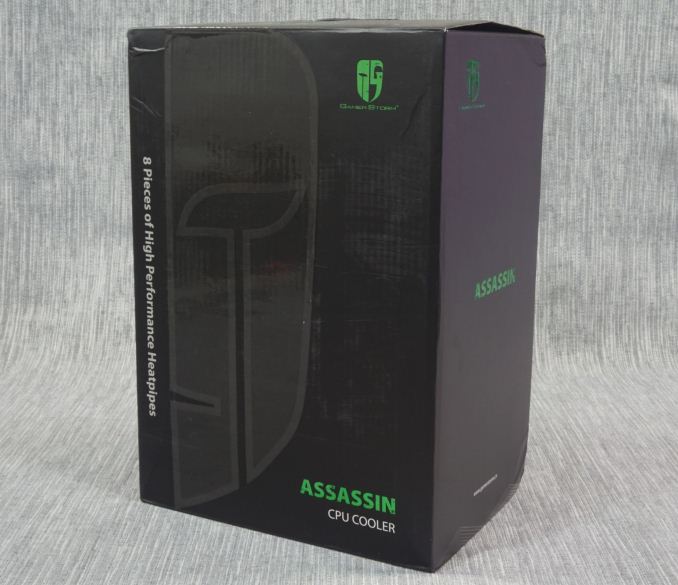
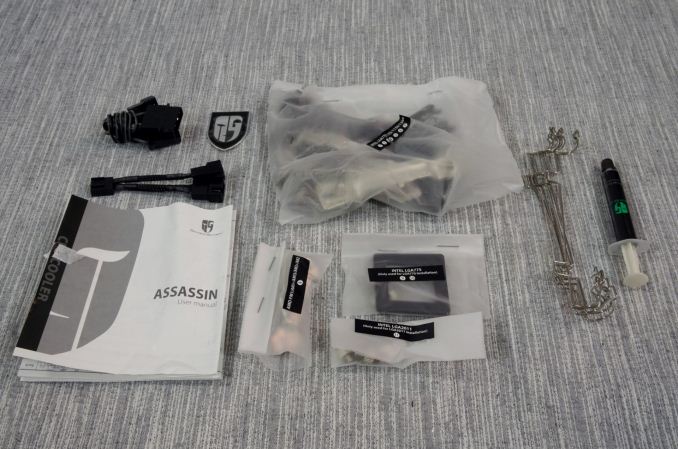
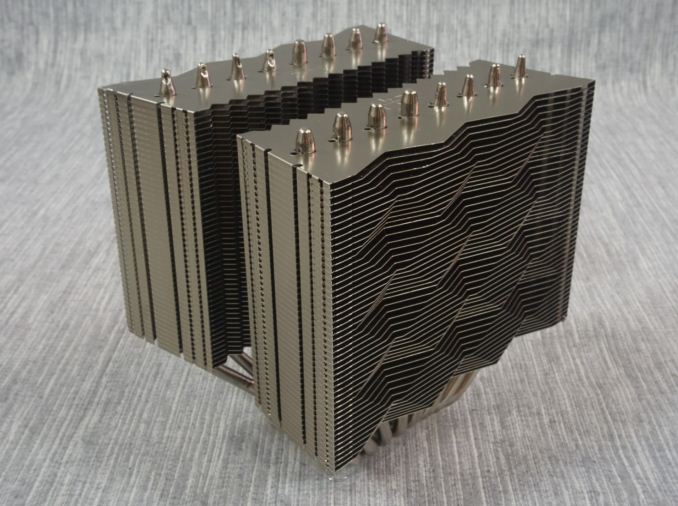
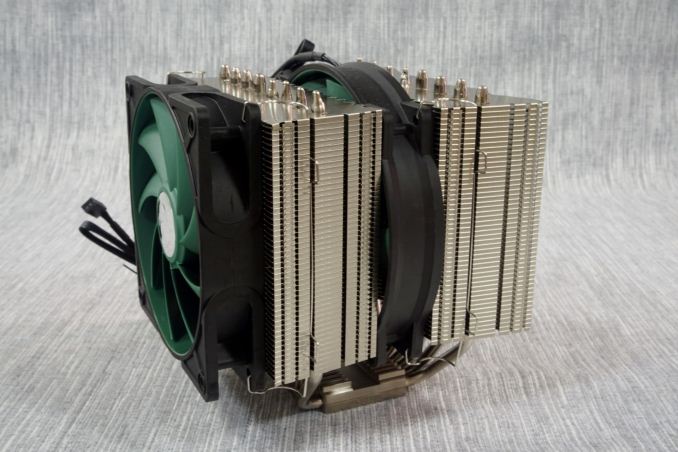
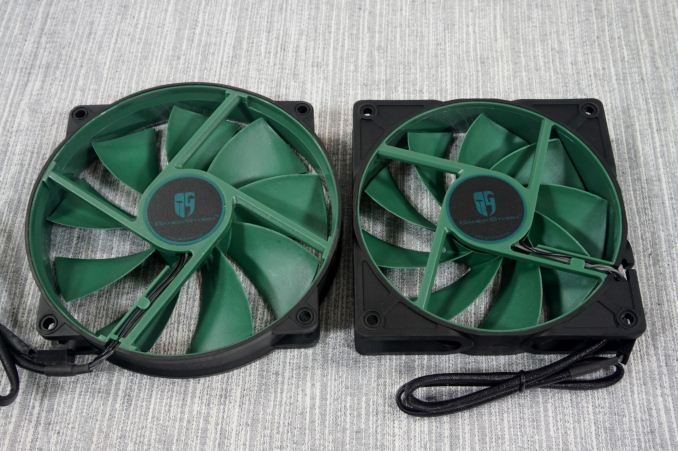









135 Comments
View All Comments
Narcissist - Tuesday, July 14, 2015 - link
I fully agree with the Oxford Guy. I've got a NoFan CR-95C cooling my non-OC i7 4790K. This in conjuction with a couple of M.2 SSD-units, a passively cooled PSU and a passively cooled graphics card makes for a 100% quiet and rather powerful computer. To be on the safe side I've added a Noctua D14 which is configured to force air across all components when the motherboard temperature gets over 50 degC. I is almost never active, though. I've run the Prime95 "Torture Test" for prolonged periods but the CPU-temp consistently stays below 70 degC. In my opinion the NoFan unit is doing a splendid job, although at a price.Sivar - Friday, February 5, 2016 - link
Listen to Oxford Guy. I've used three NoFan models and they all work amazingly well...as long as your CPU's power consumption stays under 100W. If you use a 6- or 8- core i7, or if you overclock enough to hit the 100W envelope, fanless is not for you.Note that NoFan coolers benefit only slightly when a fan is used. They are truly built as fanless coolers from the ground up.
lagittaja - Monday, July 20, 2015 - link
My HTPC has a G2120 with NH-U12P, HD5670 with Accelero S1r2, 64GB Samsung 830 + 1TB WD Black along with 80+ Plat 400W fanless PSU. Inside Lian Li A05N.Only fans being filtered intake Gentle Typhoon @~600rpm and exhaust Slip Stream ~400rpm.
Pretty overkill cooling wise. Could drop the fan speeds even further..
To answer your question, yes it can easily handle it provided there's a teeny weeny bit of airflow in the case.
Work rig has a HR-02 Macho with 800rpm Slip Stream cooling a 3770K@4.7Ghz/1.336V. Could run it fanless if I'd drop the clocks to say 4.3/1.1 or so..
Cvengr - Friday, December 25, 2015 - link
It would simply be the ratio of surface area of the fins to the surface area of the top of the CPU making contact with the heat collector. The fans merely dissipate the heat more quickly over the same area.The advantage of the fans are to transfer the heat by convection to the outer environment more quickly than allowing the heat to build up closer to other components in the system.
If designed for heat transfer, the other components are likely to have been designed assuming an ambient temperature at a particular max level, say 100-130degF. As the delta Temp between the environment and the part generating the heat will increase, so will the heat flow by conduction.
Intent is to draw the heat as far away from the components as possible.
One problem in these designs is to get the heat away from the CPU, as well as the Motherboard components, as well as other components in the case, so the interior case temperatures don't approach the environmental max design temps of those components.
A disadvantage in building by components, is that the component manufacturers are likely to only design for their particular component or one they support.
A common problem in Data Centers is how to remove all the heat from the racks and equipment within them. ANSI/TIA 942 stds go a long way to coordinate between disciplines and trades to effect proper HVAC in the server areas, but even within the racks and cabinets, too many designs limit themselves to providing a temperature set point at different areas in the room, but fail to flow adequate air over the equipment to transfer the heat away from the local electronics environments.
Computer Room Air Conditioners (CRAC) units are notorious for being installed to remove heat, but fail to provide adequate ventilation (air movement) within the computer rooms.
Since most of the CRAC units use split systems (condensate lines in 1/2" copper tubing running through the wall to a condenser outside the building), The natural trend would be to incorporate a small heat exchanger using a CPU water cooling fluid as the secondary, and the chilled water from the condensate of a HVAC system as the primary chilled water to remove the heat.
I haven't shopped the Enterprise level systems. I wonder if such systems are commodities.
sjakti - Monday, July 6, 2015 - link
Interesting article, thank you! I especially appreciate the "Quick Conclusions", that's a great table.Shadow7037932 - Monday, July 6, 2015 - link
I wish you guys had included the Hyper 212+/EVO in the review as the base comparison.zodiacfml - Monday, July 6, 2015 - link
True. It should be the default heatsink to compare with. Now that majority of Intel's CPUs become low power and efficient, these dual tower designs seem overkill except for the unlocked multiplier overclocker or fanless PCs.Achaios - Monday, July 6, 2015 - link
Obsession with CM Hyper 212 EVO "Hypertwohundredtwelvetitis" is a disease also prevalent in Overclock.net. People go berserk over the 212, almost as if they have been mass brainwashed or mass hypnotized. To my best understanding, this mass hysteria is due to the fact that cheap "enthusiasts" may save up to the hugely important sum of $9.99 if they go with the 212 compared to other coolers for the wondrous performance gain of 0.8 Celsius. In other words, the mass hysteria with the 212 is because if you go with the 212, you will save enough money in the end to buy a pack of cigarettes and a can of beer.Nagorak - Monday, July 6, 2015 - link
Well every little bit counts, and to be honest I can understand why people would not want to spend $70-$80 on a heatsink. Getting a decent heatsink for $30-$40 makes sense for a lot of people. However, if you consider wasting money buying cigarettes to be reasonable, I can understand why you wouldn't put much stock in saving a few bucks.Achaios - Monday, July 6, 2015 - link
Given how many overclockers and enthusiasts actually use the CM Hyper Evo 212 in their rigs (as eveidenced at Overclock.net) I think that Zodiacfml's suggestion of the CM hyper Evo 212 being used as a baseline cooler is a good one and I recommend the OP to take it.